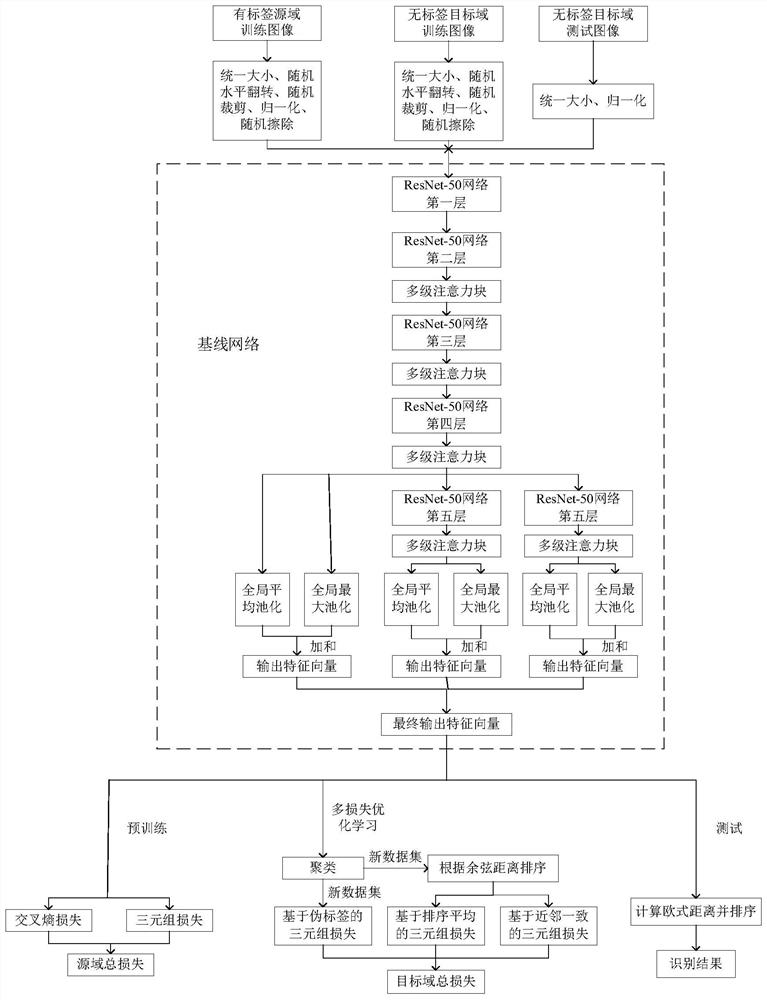Unsupervised cross-domain pedestrian re-identification method
A pedestrian re-identification, unsupervised technology, applied in the field of unsupervised cross-domain pedestrian re-identification, can solve the problem of reducing the performance of pedestrian re-identification, and achieve the effect of high recognition accuracy
- Summary
- Abstract
- Description
- Claims
- Application Information
AI Technical Summary
Problems solved by technology
Method used
Image
Examples
Embodiment 1
[0189] Take the source domain as the Market-1501 dataset and the target domain as the DukeMTMC-Re-ID dataset as an example.
[0190] 1. The source domain is the Market-1501 data set, which includes 12,936 training images of 751 pedestrians. The training images are used for pre-training. After many experiments, the optimal value of the experimental parameters is obtained: Step 3 The pedestrian category P of a batch of training is set to 32, the number of images K of each type of pedestrian in a batch of training is set to 4, the margin hyperparameter μ of the triplet loss is set to 0.5, and the preset training times in the pre-training process is 150 .
[0191] Save the baseline network weight after the last training, and use it as the initial weight of the baseline network for the multi-loss optimization learning process;
[0192] 2. The target domain is the DukeMTMC-Re-ID dataset. The dataset includes 16,522 training images of 702 pedestrians. The training images are used fo...
PUM
 Login to View More
Login to View More Abstract
Description
Claims
Application Information
 Login to View More
Login to View More - R&D
- Intellectual Property
- Life Sciences
- Materials
- Tech Scout
- Unparalleled Data Quality
- Higher Quality Content
- 60% Fewer Hallucinations
Browse by: Latest US Patents, China's latest patents, Technical Efficacy Thesaurus, Application Domain, Technology Topic, Popular Technical Reports.
© 2025 PatSnap. All rights reserved.Legal|Privacy policy|Modern Slavery Act Transparency Statement|Sitemap|About US| Contact US: help@patsnap.com



